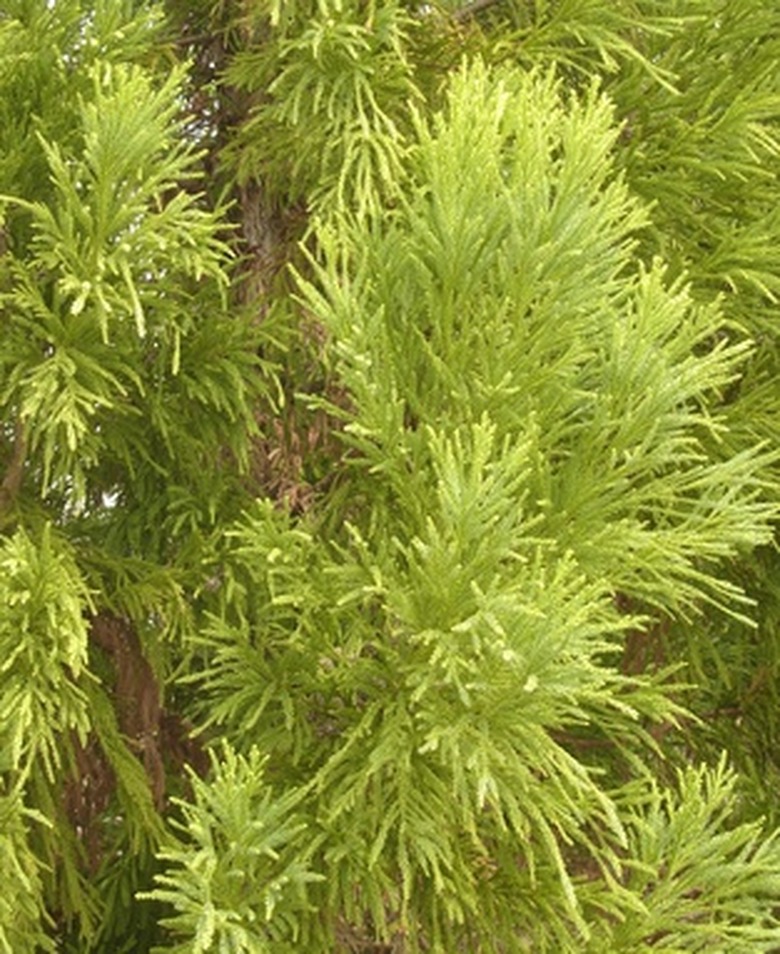Cryptomeria Japonica Diseases
Cryptomeria japonica, also known as the Japanese cedar tree, reaches a height of about 15 feet and has a spread of about 10 feet in diameter. This tall tree has ornamental bark that is a dark reddish brown and holds its foliage year-round, although the leaves are bronze in winter and green in spring and summer. Cryptomeria japonica diseases can shorten the life of this tree and render its beautiful foliage and bark cosmetically displeasing.
Leaf Blight
Leaf blight is most noticeable in the summer when the Japanese cedar should be a healthy, rich, dark green. Inner leaves turn brown first, giving the tree a thinning, unhealthy appearance. Left untreated, older twigs will turn gray and small, black cavities will develop on the upper surfaces of infected leaves. This disease is a big aesthetic problem, and can kill old and young trees, according to British Columbia's Ministry of Forests and Range. Remove affected foliage using sterile pruning and dispose of all plant materials in a sealed bag or by burning. Continue to monitor the tree and remove any newly symptomatic foliage. If possible, prune plants around the Japanese cedar so that the tree gets as much morning sun as possible. If the symptoms persist, you can treat the problem with a fungicide.
- Cryptomeria japonica, also known as the Japanese cedar tree, reaches a height of about 15 feet and has a spread of about 10 feet in diameter.
- Cryptomeria japonica diseases can shorten the life of this tree and render its beautiful foliage and bark cosmetically displeasing.
Leaf Spot Disease
Leaf spots first appear as small black, brown or purplish dots on the leaves of cryptomeria japonica. Left untreated, they will develop yellow rings and the centers of the spots will rot out as the blotches enlarge. In time, the leaves may brown on the tree or fall. Leaf spot can usually be controlled with sterile pruning of infected leaves and branches. Be sure to dispose of all debris completely and remove any plant material from beneath the tree to prevent reinfection. If the symptoms return, a fungicide may help control the problem.
Twig Blight
Twig blight is almost always a "childhood" issue for Japanese cedars thanks to overhead watering in nurseries, according to the University of Illinois Extension. Young needles develop yellow spots at their tips and, left untreated, will turn from yellow to reddish brown to gray until the entire branch dies. Cankers may also accompany this disease. All blighted parts of the plant should be removed by sterile pruning and all remnants of plant material should be cleared away from beneath the tree. Water using a drip hose at night or early in the morning. If this fails to resolve the blight symptoms, then treat the tree with a fungicide to kill the problem.
- Leaf spots first appear as small black, brown or purplish dots on the leaves of cryptomeria japonica.
- Young needles develop yellow spots at their tips and, left untreated, will turn from yellow to reddish brown to gray until the entire branch dies.
